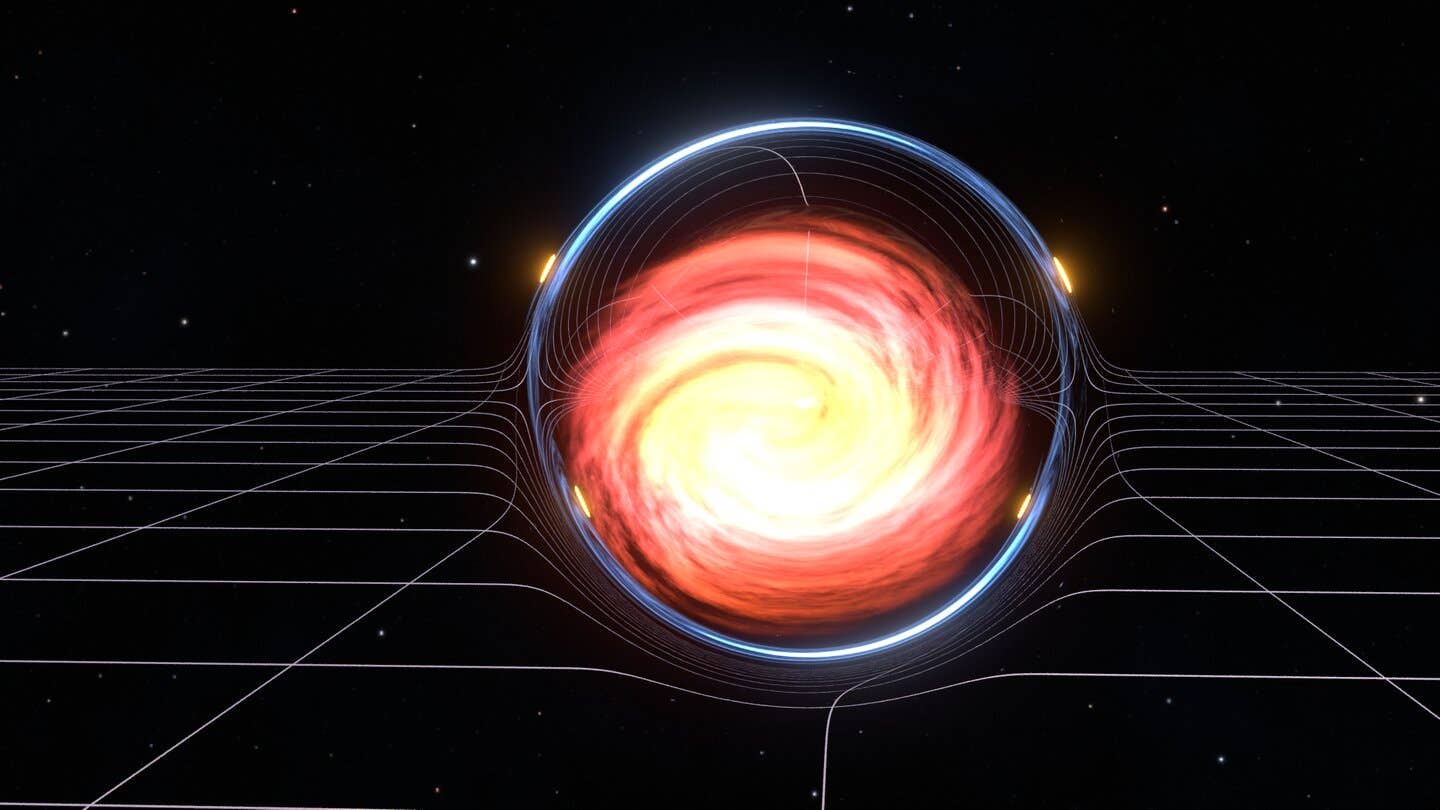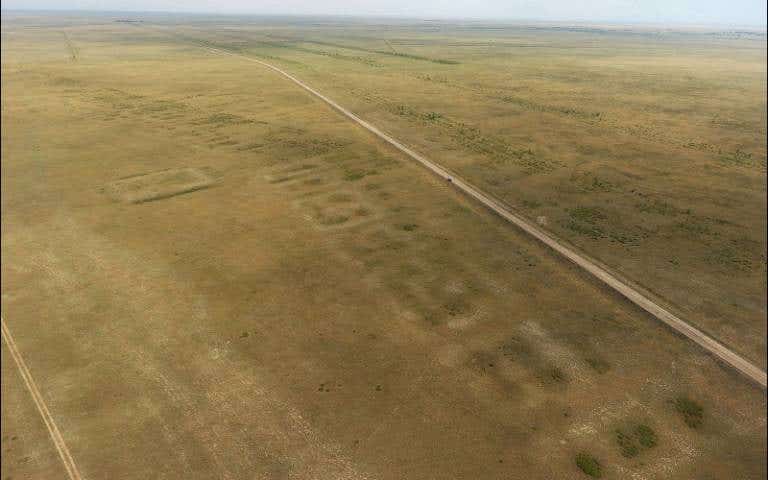Mars glaciers found to be 80% ice – could fuel future human settlements
Glaciers on Mars are over 80% pure water ice, pointing to a frozen past and future resources for human missions.

Mars’s glaciers contain over 80% pure water ice under a thin debris layer. (CREDIT: ESA/DLR/FU Berlin)
On the flanks of Martian mountains and crater rims, curious shapes sprawl outward like thick syrup frozen mid-flow. But these are not rivers of rock or lava. They’re massive glaciers, hidden under layers of dust and rubble, and they might just be key to unlocking the planet’s climate history—and to sustaining future human missions.
For decades, scientists believed these Lobate Debris Aprons, or LDAs, were mainly rocky debris lightly laced with ice. The glaciers are found in Mars’s mid-latitudes, between 30 and 50 degrees in both hemispheres, and resemble Earth's own rock glaciers. But a closer look has flipped that old idea on its head. A new radar survey suggests that these Martian glaciers contain more than 80% pure water ice under just a few meters of dust.
This finding, published in the journal Icarus, suggests Mars has experienced either a single planet-wide glaciation or a series of similar ice ages. And unlike patchy, hard-to-compare studies of the past, this one uses consistent methods across multiple sites, offering a clearer picture of the planet’s frosty past.
Peeling back Mars’s icy layers
The study was led by Yuval Steinberg, a recent graduate of the Weizmann Institute of Science in Israel, alongside senior scientists Oded Aharonson and Isaac Smith from the Planetary Science Institute. Smith is also affiliated with York University in Canada.
They focused on five key glacial sites scattered across Mars, including areas near the equator and in both hemispheres. Each of these had previously been studied using different tools and methods. This made it nearly impossible to compare the results. "Different techniques had been applied by researchers to various sites, and the results could not be easily compared," Smith explained.
The team aimed to change that by standardizing their approach using data from SHARAD, the Shallow Radar instrument aboard NASA’s Mars Reconnaissance Orbiter. This radar sends radio pulses into the Martian crust and captures how fast and how far they travel. From this, scientists can calculate two important physical properties—dielectric constant and loss tangent. These numbers tell researchers how much ice and how much rock lie beneath the dust.
Related Stories
- New study finds life could survive under the surface of Mars and other planets
- Why Mars became a desert while Earth stayed alive
- Scientists may have found the right location to begin living on Mars
Not just dirt-covered rubble
Earlier studies had offered mixed conclusions. Some thought these glaciers were more like rock glaciers, with only about 30% ice. Others suggested they were nearly pure ice, buried under insulating debris. But most of those studies analyzed only a few radar tracks and often used different radar setups or conversion methods.
For this project, the team looked at five sites: three in the northern hemisphere and two in the southern. They examined hundreds of radar tracks, applying a uniform method to all of them. They even added a previously unstudied location near Tempe Terra to expand global coverage.
To their surprise, all five locations showed strikingly similar radar signatures. Each one pointed to a composition of more than 80% water ice, with only a thin top layer of rock and dust.
"This is important because it tells us that the formation and preservation mechanisms are probably the same everywhere," Smith said. That uniformity means that whatever process formed these glaciers—be it one major glaciation or several similar ones—it affected the whole planet in a consistent way.
Ice purity points to climate clues
The results also suggest that Mars’s climate once supported widespread snowfall or frost that could build glaciers. Today, the planet is too dry and cold for such activity. So, for glaciers to form and survive, Mars must have had different atmospheric and orbital conditions in the past.
Dielectric constant values between 3.0 and 3.2, and loss tangent values below 0.005, all point to nearly pure water ice. These match those found in Mars’s polar ice caps. By contrast, volcanic flows on Mars give much higher values, proving they are poor in ice.
Knowing how much ice these glaciers contain helps scientists understand how water once moved through Mars’s ancient atmosphere. It also offers insight into how dust storms and orbital tilts may have shaped long-term climate cycles. And with each new radar scan, researchers can refine models of Martian glaciation and better predict where more hidden ice might be buried.
A global reservoir for future missions
This study does more than shed light on Mars’s past. It also shapes plans for future human exploration.
Water is heavy and costly to haul from Earth. But ice, already on Mars and locked under a thin layer of dust, could supply future crews with drinking water, breathable oxygen, and even rocket fuel.
Pure ice is far easier to use than a mix of stone and frost. You don’t need complex gear to melt or filter it. With vast frozen reserves in many terrains—some even near the equator—Mars becomes more welcoming to long-term missions.
The SHARAD radar’s ability to pinpoint these reservoirs helps planners choose ideal landing and habitation sites. And as more LDAs are studied using the same method, patterns may emerge that reveal local microclimates or even geothermal hotspots that once warmed the crust from below.
Cracking the Martian cold case
LDAs are part of a broader family of Viscous Flow Features (VFFs), which also include Lineated Valley Fills and Concentric Crater Fills. These formations suggest slow surface flows and glacial activity, just like those seen in cold regions on Earth.
Previous radar studies only covered a few sites. For example, Holt et al. (2008) looked at Hellas’s eastern rim and found near-pure ice. Gallagher et al. (2021) studied Phlegra Montes and found similarly promising values. Petersen et al. (2018) performed one of the most thorough studies, analyzing over 500 tracks in Deuteronilus Mensae, showing consistent ice purity.
Steinberg’s new work expands that foundation, unifying the data and bringing clarity to an area previously marked by confusion and conflicting methods.
It’s not just about counting how much ice is there. It’s about understanding the story the ice tells—the cycles of snow and dust, the shifting tilt of Mars’s axis, and the way time sculpted a once-wetter world into the dry desert we see today.
As Aharonson pointed out, “This study highlights how NASA programs are advancing science not just within the United States, but also reaching students around the world.”
And Mars, it seems, still has many frozen secrets to tell.
Note: The article above provided above by The Brighter Side of News.
Like these kind of feel good stories? Get The Brighter Side of News' newsletter.



